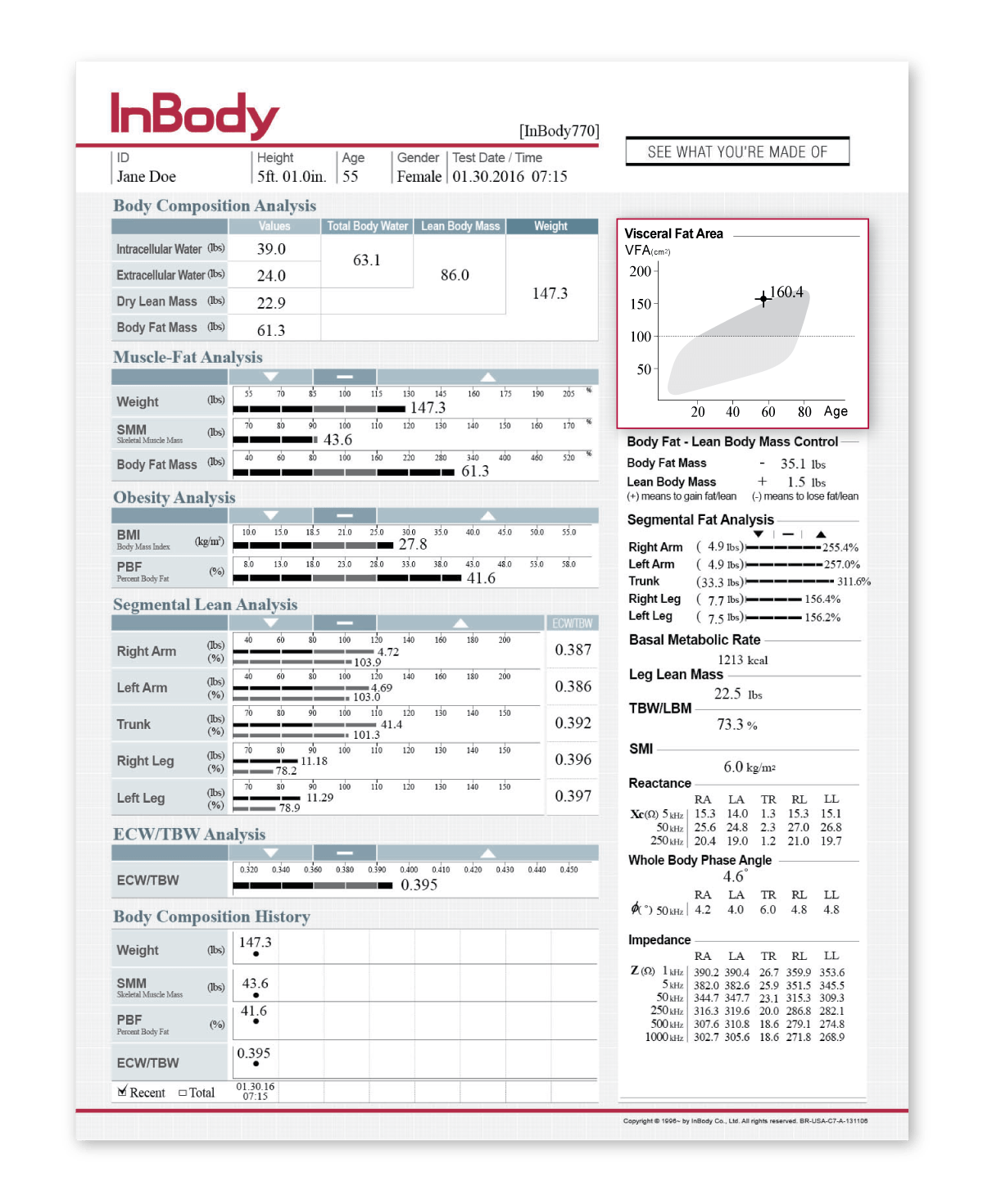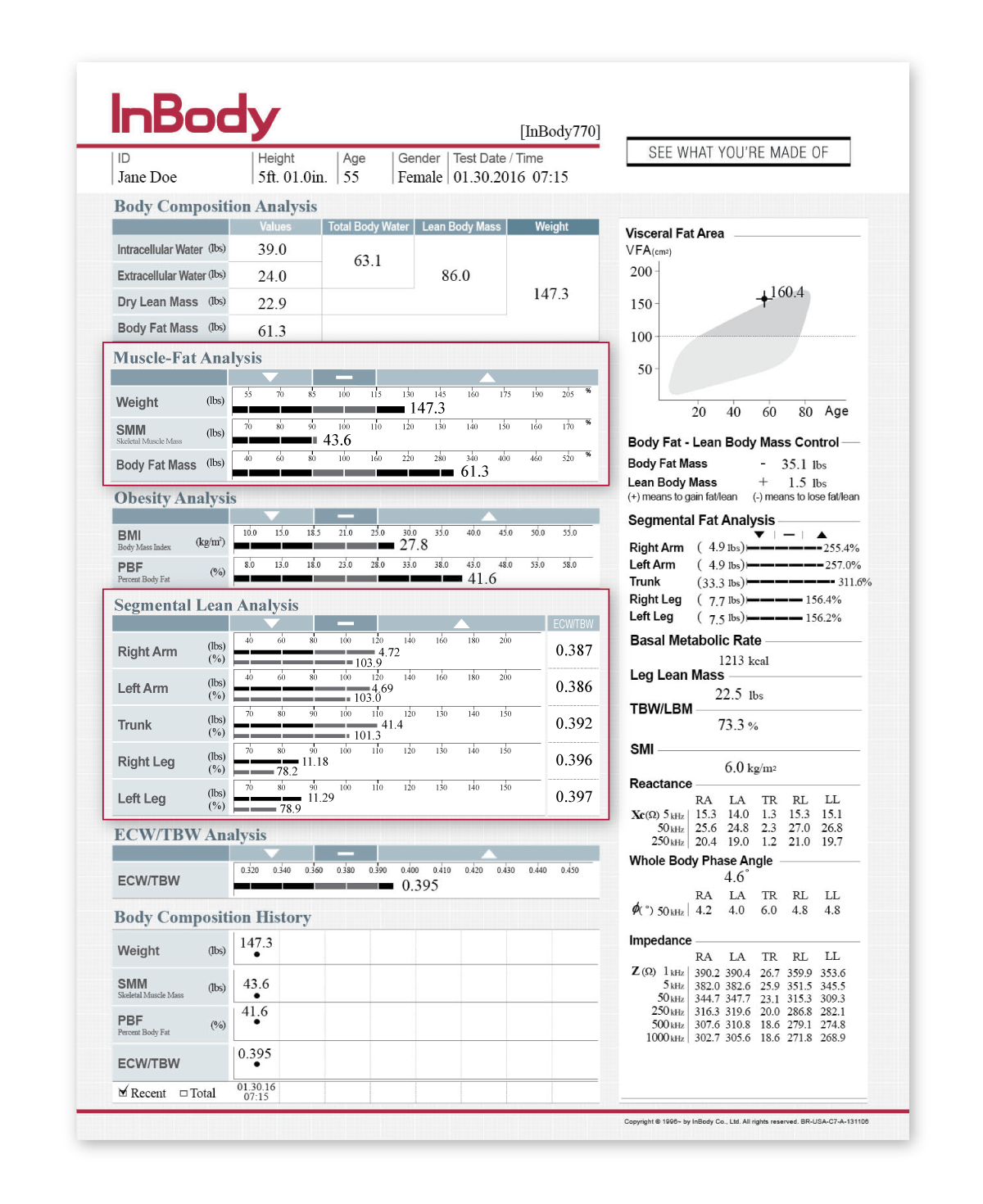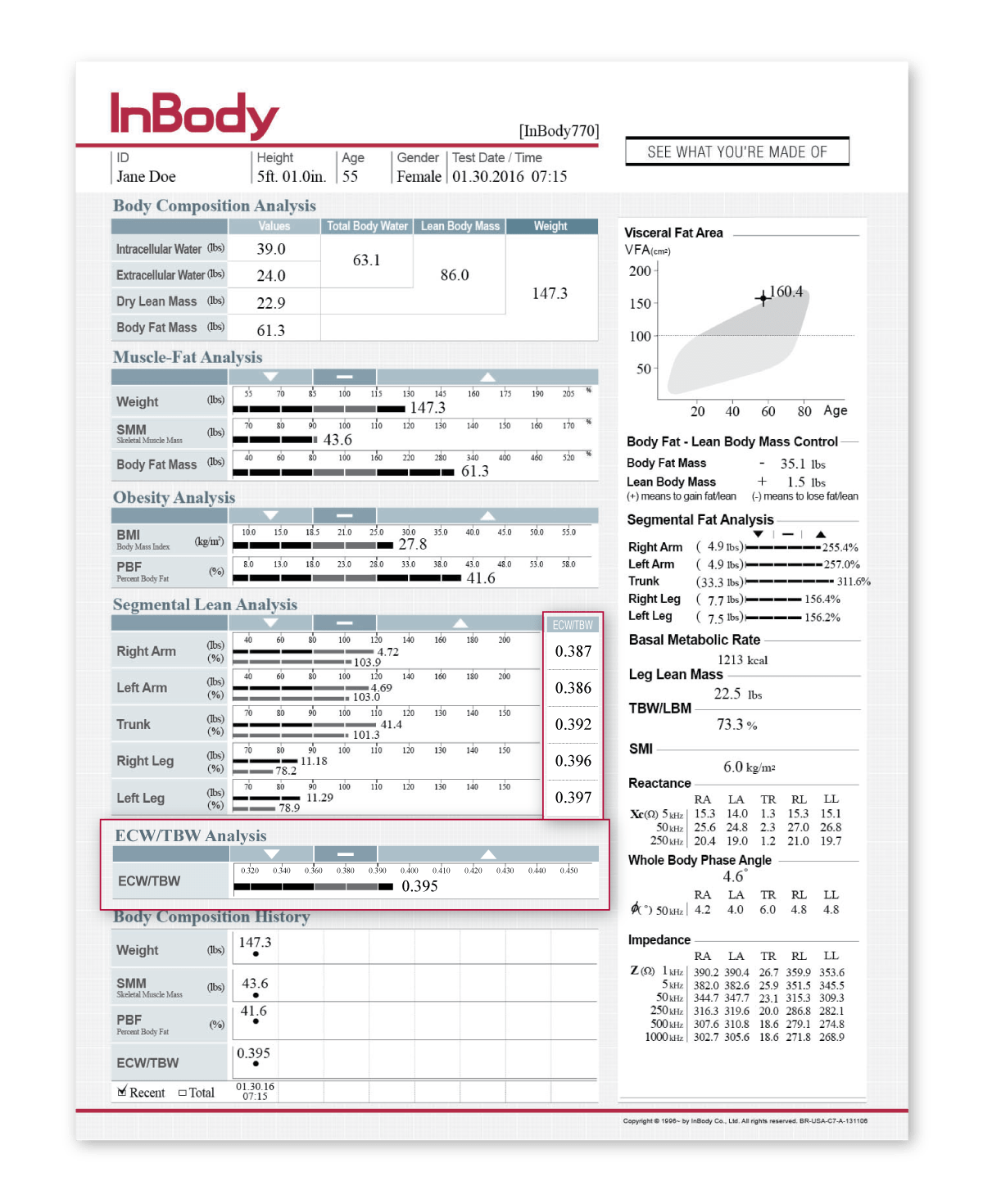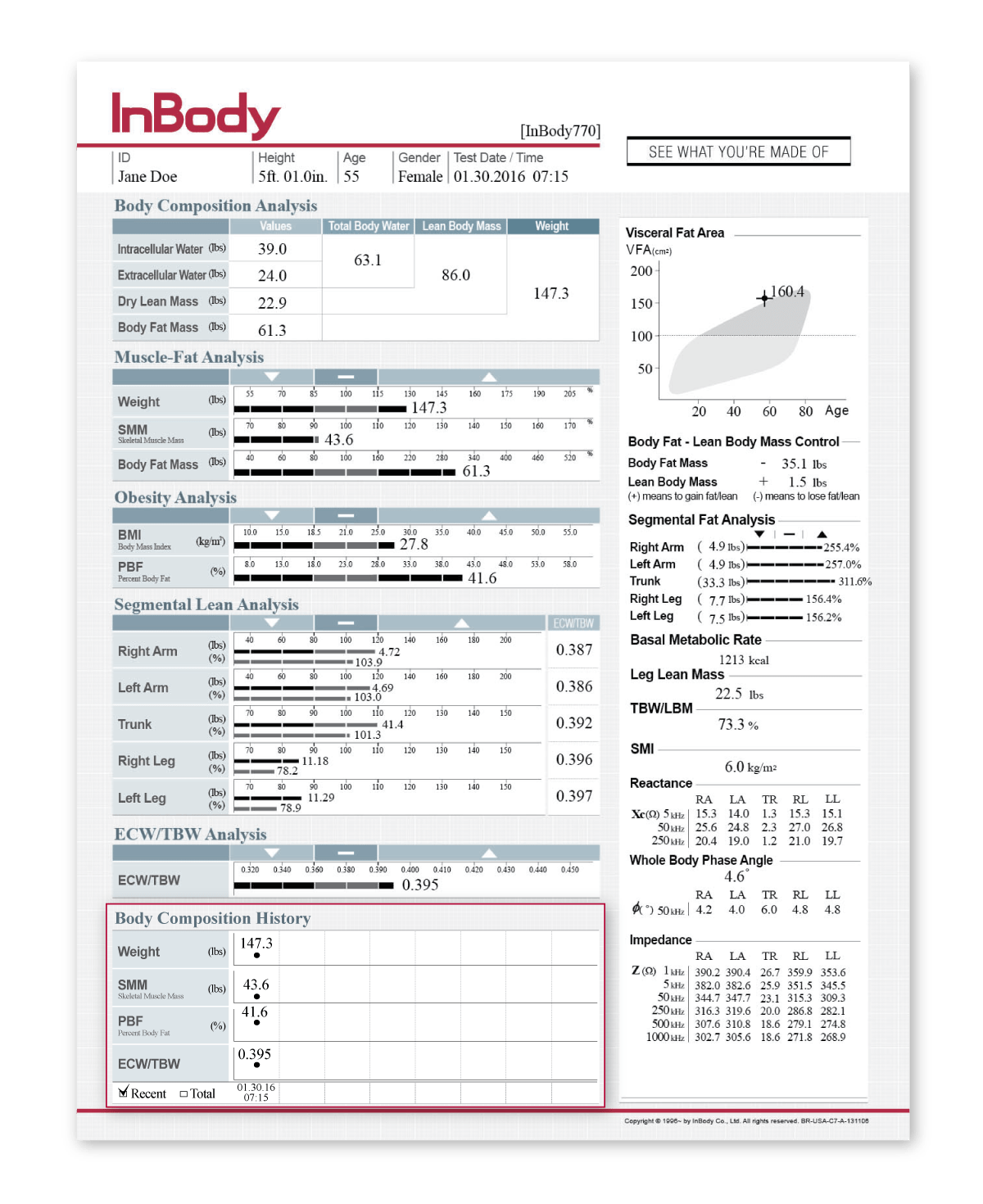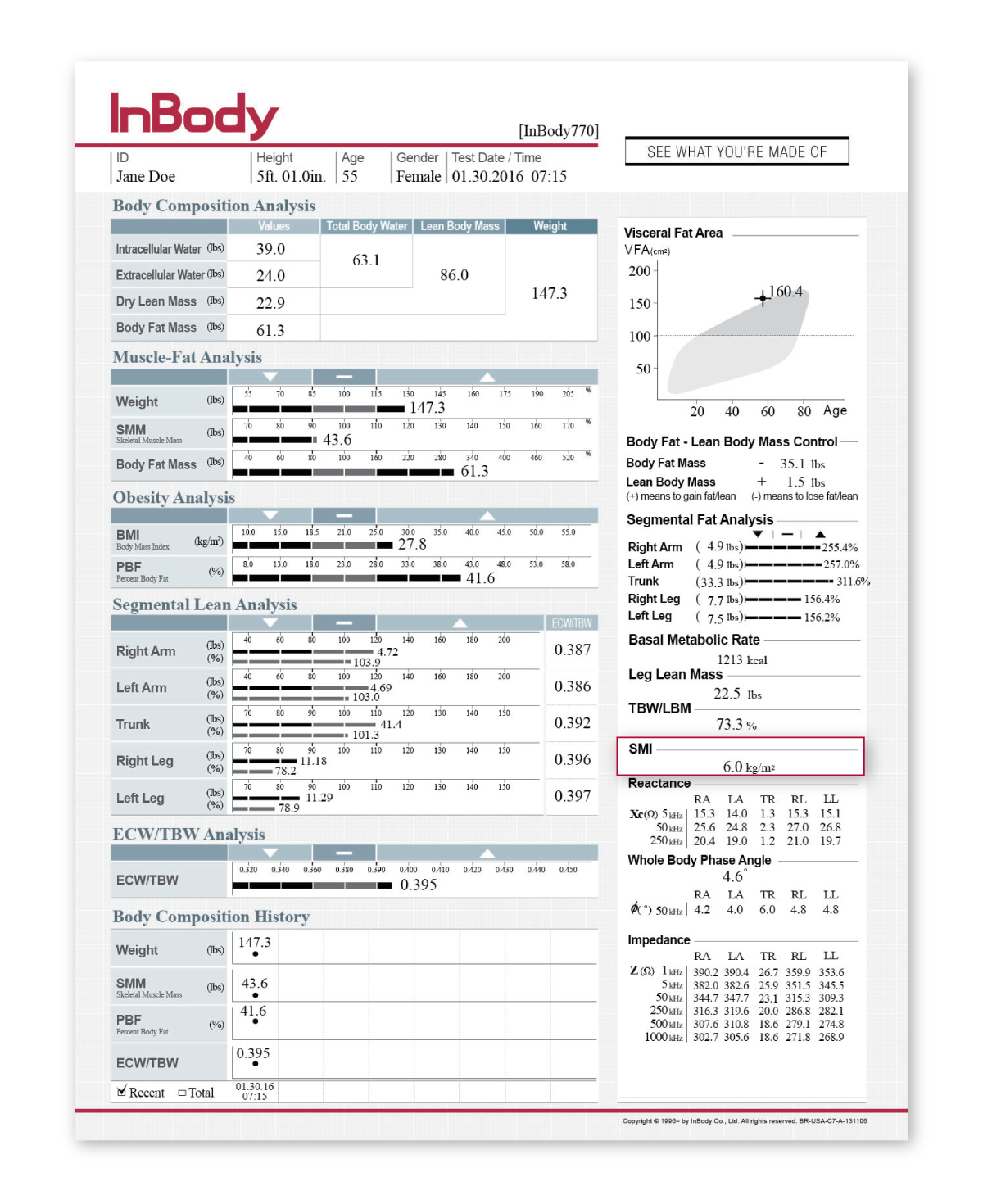SKELETAL MUSCLE INDEX
Identify frailty risk and sarcopenia
Diabetics patients tend to lose muscle mass. This loss in muscle mass tends to increase with the duration of diabetes, thus leading to the development of other conditions, including sarcopenia. InBody provides a skeletal muscle index (SMI) output that allows for the monitoring of skeletal muscle mass to help prevent or identify sarcopenia.
It is well known that skeletal muscle mass is important to monitor for diabetics. This results from glucose not being utilized to assist in building muscle as well as decreased physical activity causing muscle mass to deplete. This can also cause increased fatigue and further reduction of physical activity and function. The resulting decrease in muscle mass experienced by these patients increases the risk for other conditions such as sarcopenia and impaired mobility.
Sarcopenia is the loss of skeletal muscle mass, which decreases functional mobility and quality of life and increases risk of hospitalization and mortality. Sarcopenia is often associated with aging; however, it can occur in a variety of populations due to sedentary behavior or even disease. The SMI is used in order to assess and conveniently monitor skeletal muscle mass to aid in the diagnosis of sarcopenia. SMI is calculated as the sum of appendicular lean mass, normalized to height.
With the prevalence of muscle loss in diabetics and the association diabetes and sarcopenia, monitoring risk for sarcopenia in diabetics is imperative. Using the SMI output on InBody results will allow medical professionals to identify the risk of sarcopenia in easily identify increased frailty risk and promote education and intervention.


